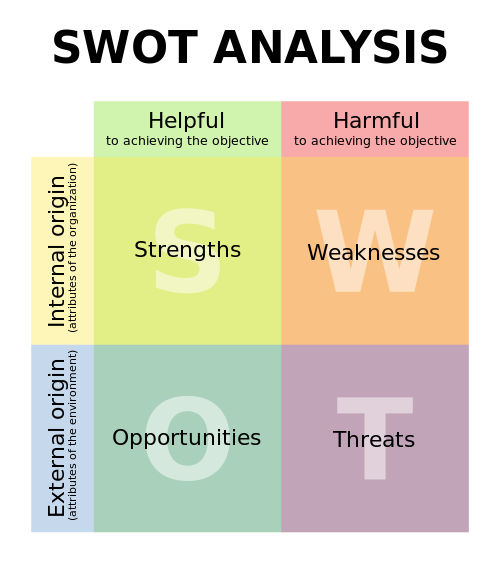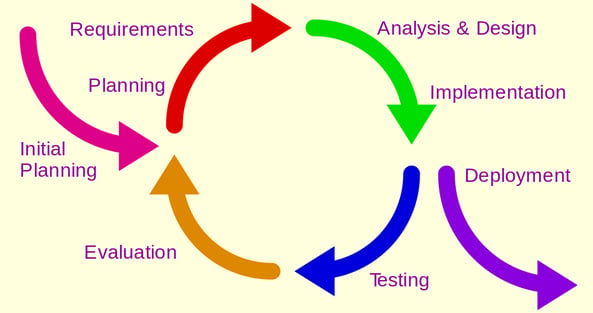5 min read
10 Steps: How to Develop a Successful Mobile Strategy for Business?
Sales : Jun 30, 2017 12:00:00 AM

A mobile strategy is a way to incorporate mobile devices into your overall corporate strategy. According to CMS report, average smartphone conversion rates are up 64% as compared to that for desktops. This makes a mobile strategy altogether more important for businesses. With 80% of internet users on smartphones, it is the time when managers should start considering mobile presence as a “have to” for their business.

Developing a mobile strategy from scratch takes time, research and methodology to bring fruitful results. A good strategy should align with company's vision, engage users, initiate buying action, distinguish the brand from competitors and should fall within the budget. But how to develop a mobile business strategy that addresses all these major concerns?
Want to know the latest hacks to get your mobile app marketing sorted? Grab our free eBook:
How to Develop a Successful Mobile Business Strategy in 10 steps?
To help you develop a mobile strategy focused on bringing profitable results for your business we have streamlined a 10 steps approach to bring profitability to mobile:
1. Highlight Company’s Overall Strategy:
Your company’s overall strategy includes your mission, vision, goals, and targets. Think of this as a long-term approach, you need your app to bring business for your company and to make that possible it is important to make an app that can be useful for the long run. You should know how an app would help 5 years down the road for your company. To add value for your customer make sure that your company’s end goal reaches out to the target user of the app.
Read More: How much does it cost to develop a mobile app?
2. Identify your User:

Users of an app can differ to a wide extent. It is important to distinguish target users of the app from miscellaneous. Your users can be differentiated by gender, age, businesses or customers etc. A good app focuses on the target users and makes apt use of the same. The common mistake made here is to guess the user’s taste and preferences and make important decisions on assumptions. This is where personas come handy. You need to make different personas for different users and prioritize accordingly.
Interesting Reads: 10 key metrics to measure user engagement on mobile
3. SWOT Analysis:

Identifying the environment for the business brings in great insights for the decision makers. What better way to analyze the business environment that SWOT analysis. SWOT stands for Strength, Weakness, Opportunity, and Threat. Strength and weakness are internal factors like cash flows, resource pool, the expertise of developers etc. While opportunity and threat are external factors like competition, demand etc. Analyse the resources at your disposal - money, time, people and how you can utilize them effectively.
Read More: 7 Essential Tips to Track the ROI of a Mobile App
4. Competitor Analysis:
App stores are insanely crowded. If you are not able to differentiate yourself then you won’t stand a chance against your competitors. You need to do a proper research on all the apps that exist for the same purpose as yours. This way you will know what you are exactly up against. The key insights you need to document are:
- What my competitor is doing well?
- What are the shortcomings of my competitors?
- What are they not doing at all?
Read More: 10 Steps to Create a Successful Mobile App
5. Define your Pitch:
Next, you make a pitch. Define clearly what your app is about. It is always the one factor of an app that catches the eye. For example, if it is coffee, it is StarBucks, if its movie and entertainment tickets it is Ticketmaster, that’s how simple it is. You need to establish your app as the go-to-place for your sphere. To initiate an action you need give a compelling reason to use the app. A mobile app is very different from a website. When you expect someone to download your app, you are asking them to give you the real estate of their phones. That means you need to make every download count. Starbucks simplifies the buying experience by making payments easy from mobile and adds loyalty points to bring returning customers. A most common mistake is to think mobile as a channel rather a touchpoint. As a touchpoint mobile facilitates interaction and purchase for the product.
Read More: How Raise Funds for a Mobile App?
6. Decide the type of app you want:
Now that you have made your idea clear and concise it is time to plan the development. Based on your target audience you can choose between native or hybrid app. A native app supports only one platform so you will need a separate app for each platform. On the other hand, hybrid apps work on different platforms alike. But hybrid apps involve a little more cost and reduce the quality of user experience. Moreover, if your target audience is largely using a single platform then it is advisable to go for the native app as they are faster and less prone to bugs.
Read More: 10 Mobile App Development Trends in 2018
7. Decide your app development methodology:
 Agile Methodology
Agile Methodology
The next thing that comes in development methodology is development practice. You can get your app developed using either Agile or Waterfall methodology. In Waterfall development, you decide the parameters for development and start development in the form of a step by step process. While in Agile methodology work is performed simultaneously on different sections of the app. All sections work together and support each other. They benefit of Agile over Waterfall is that in case of a change, developers need not go back to a stage and return again thereby not repeating the entire process.
Read More: 10 Biggest Risks to Mobile App Security
8. Where to place development:
If you have an IT team ready or have the experience and resources to build your own team from scratch then you can opt to develop your app in-house. But if not then it makes more sense to outsource app development. A considerable amount of time and resources go into designing a good app and building a team will only cost you more overheads. You can always develop your in-house team once you are ready to scale your business. For first-time entrepreneurs, it is easier to outsource development than to do everything on their own.
9. Decide go-to-market strategy:
You need to decide your market strategy before you launch your app. Questions like What platforms to target? How to convey your USP and How to gain traction are all important considerations. To make your app visible, you can leverage app advertisements and banner ads. Using coupons and app specific offers can also help if applicable to your business. Your market strategy is incomplete without a target and means to measure it. Your tools here include app analytics and target can be the number of downloads, user interaction, sales etc.
Here is a detailed guide on how to stand-out in app market with app market
10. What Testing Practice to use:
No matter how hard we try, there is always that one bug that trolls us in the end. That one bug steals all the traction. While not much can be done to completely eradicate the chance of this happening, one can definitely try. The roles and responsibilities for the testing team needs to be clearly defined. The structure of the test plan and operating systems, and versions that need to be tested will always stay the same. What changes from one release to another will be the test cases and the criteria for what constitutes a ‘pass’ or a ‘fail’ for a specific scenario.
So what next? Let’s get your mobile strategy into action:
Many challenges are faced due to lack of resources in both spending budget and staff which leads to the delay in application updates as well as understanding the consumer needs. Developing a successful mobile strategy is never an easy task but if you plan it well you can definitely succeed. Once you are through with the research, you can start developing and this where our expertise comes handy. If you want to get your mobile strategy moving, then you are at the right place. We at NewGenApps specialize in developing mobile apps that make their mark in app markets. If you have a compelling idea, you want to see succeed - contact us.

10 steps: How to Create a Successful Mobile Application?
In today’s fast paced world, the mobile app market is expanding by leaps and bounds. Consequently, mobile marketing is becoming more competitive. To...






